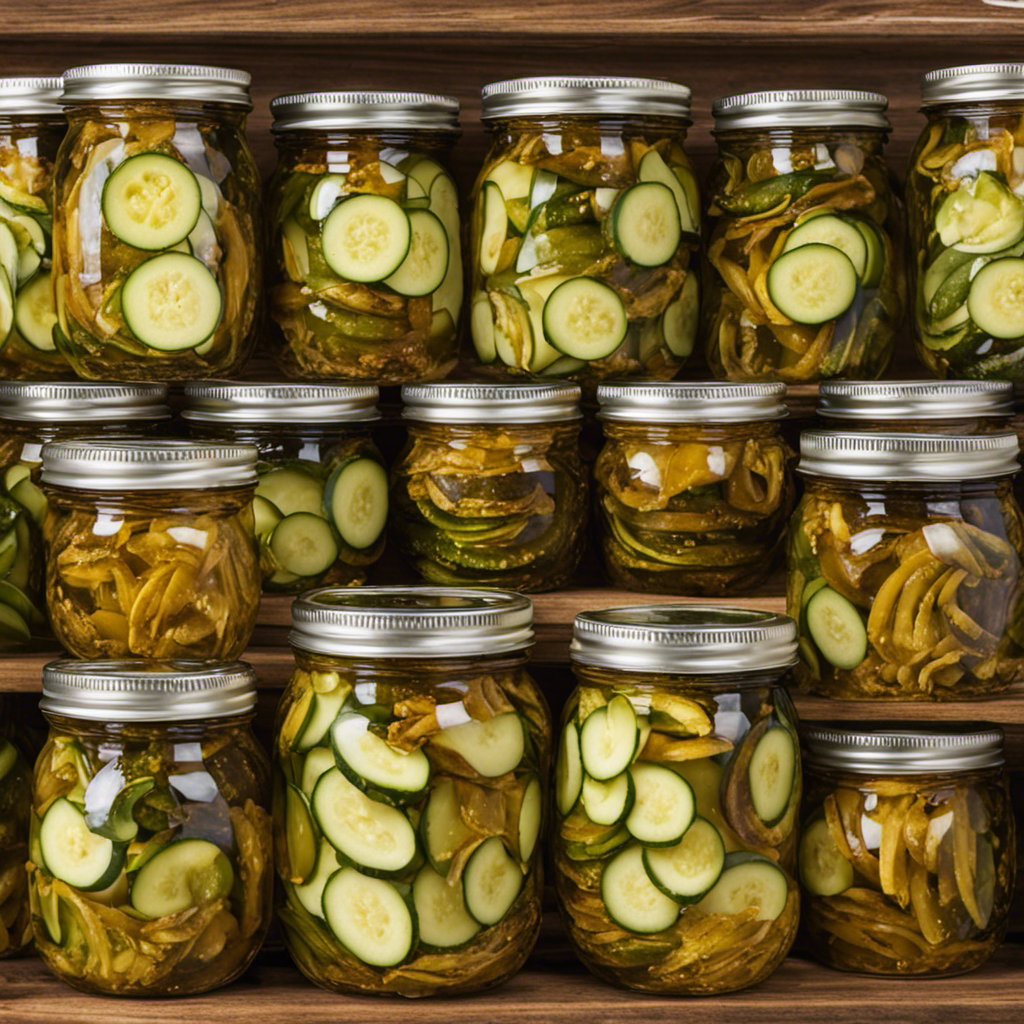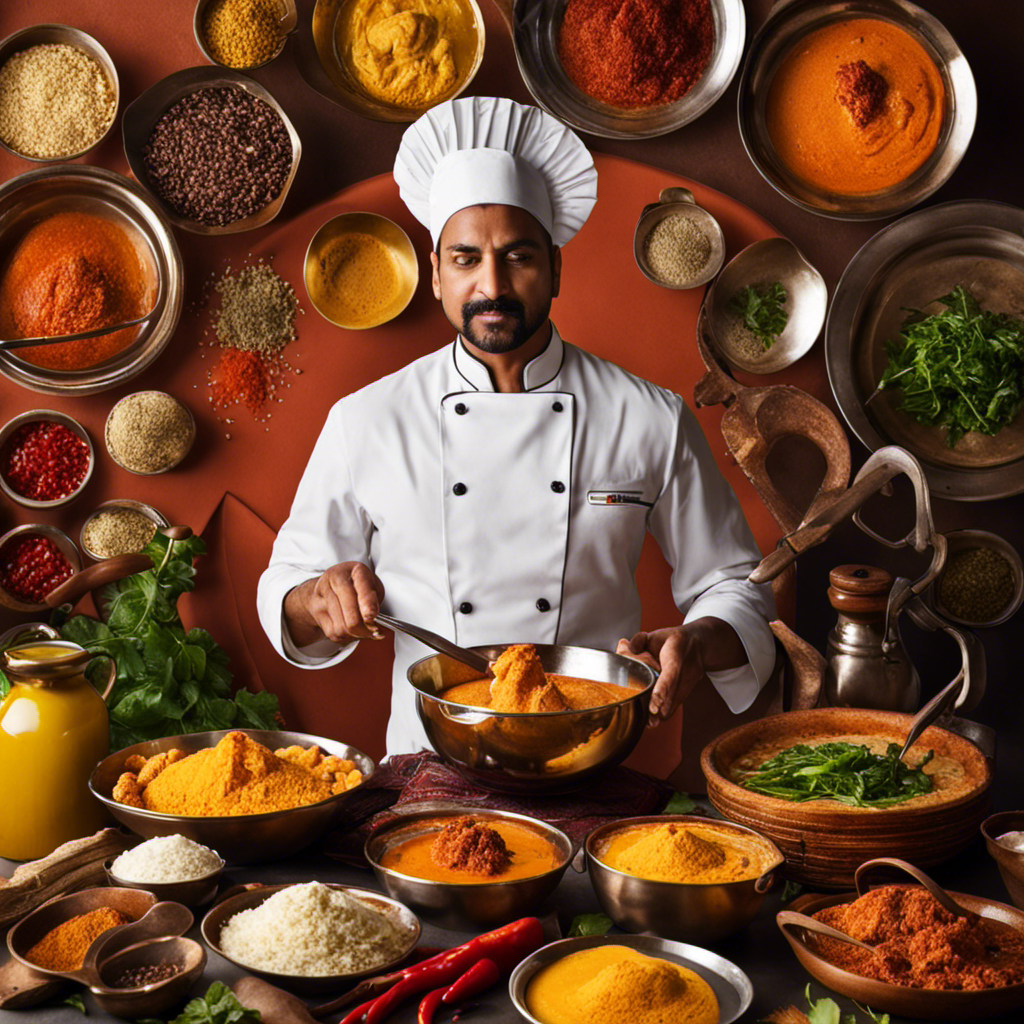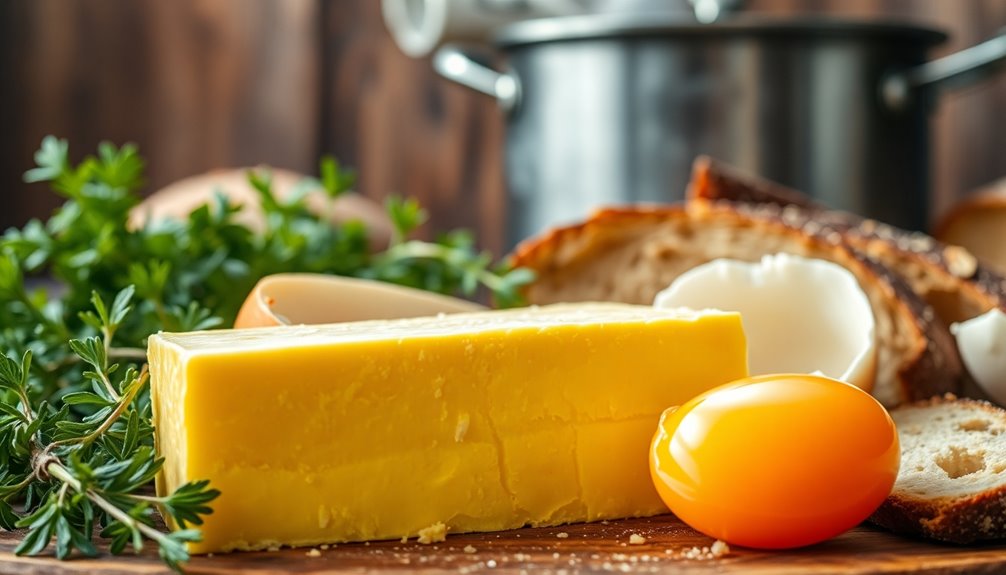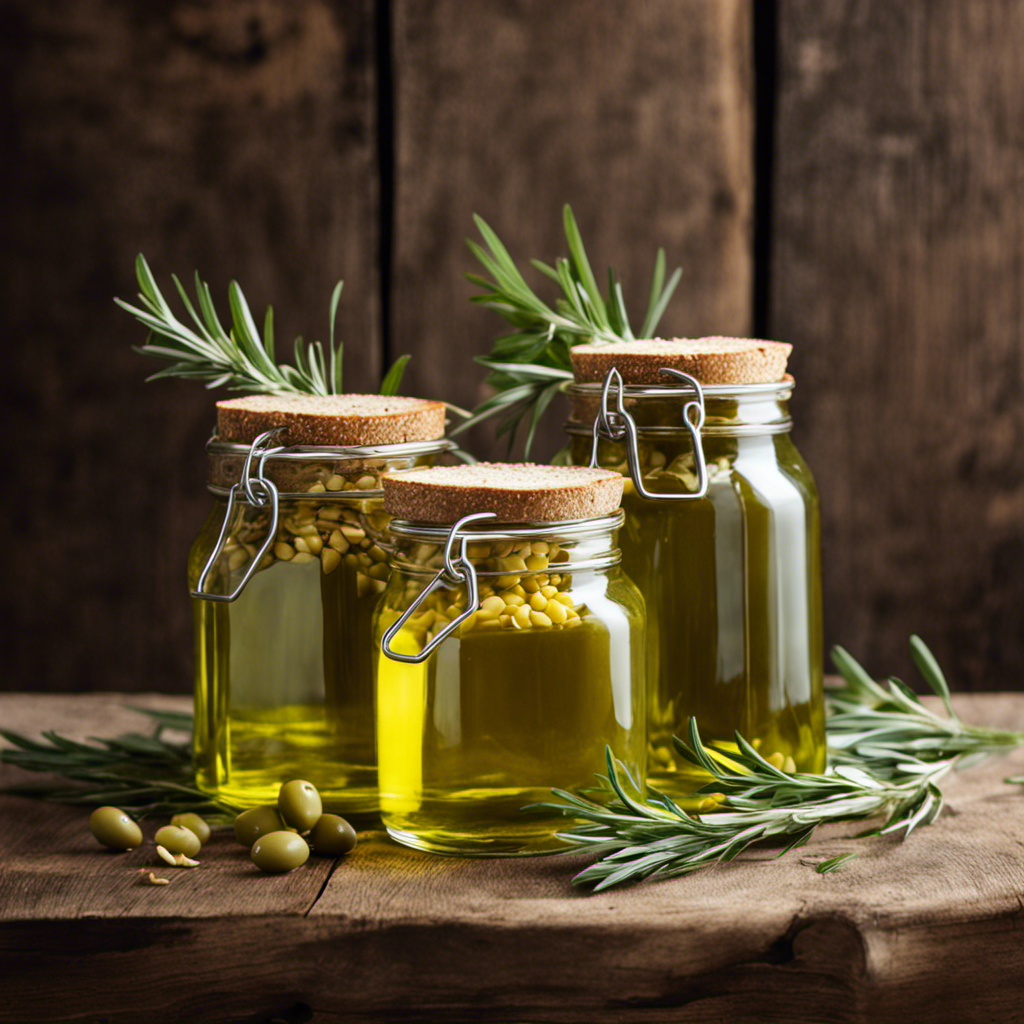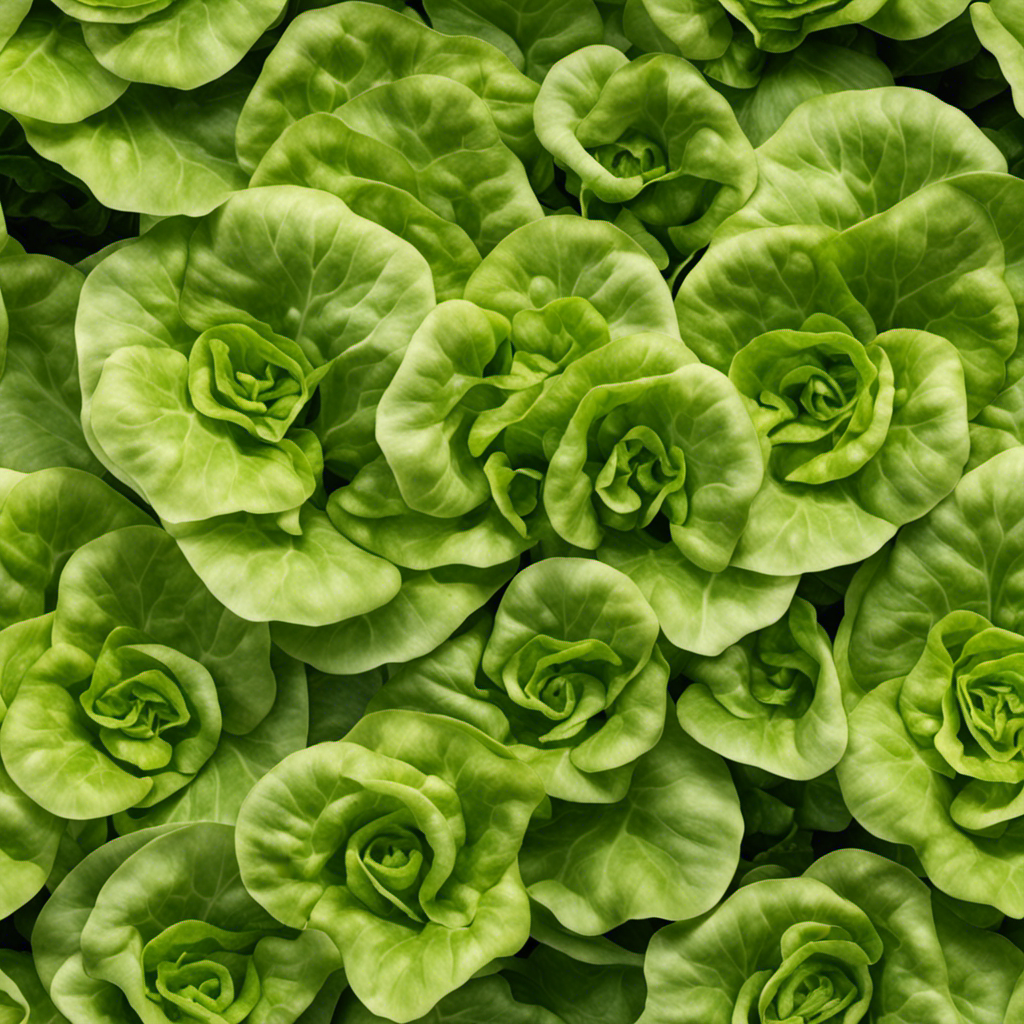When I bite into a crispy and tangy bread and butter pickle, it makes me wonder: what’s the story behind the delightful name of these pickles?
In this article, we will unravel the intriguing history and origin of the name ‘bread and butter pickles’.
With a thorough exploration of the traditional recipe, ingredients used, and the sweet and tangy flavor profile, we will dive into the story behind these beloved pickles.
Join me on this journey as we discover the secrets and uncover the health benefits, tips for making homemade versions, and creative ways to incorporate bread and butter pickles into delicious recipes.
Key Takeaways
- Bread and butter pickles originated in the United States in the early 20th century and became popular during the Great Depression due to their affordability.
- The name "bread and butter pickles" may have originated during the Great Depression, either from their affordability or their sweet and tangy flavor that pairs well with bread and butter.
- Bread and butter pickles are associated with European and Jewish cuisines and symbolize comfort food, evoking feelings of nostalgia and connecting us to our culinary heritage.
- Bread and butter pickles are known for their sweet and tangy flavor, are versatile in various dishes, and are reminiscent of homemade pickles and family recipes.
History of Bread and Butter Pickles
If you’re curious about the history of bread and butter pickles, you’ll be interested to know that they originated in the United States in the early 20th century. These sweet and tangy pickles have their culinary origins in the pickling techniques of American home cooks.
The process involves slicing cucumbers and onions, then soaking them in a brine made of vinegar, sugar, and spices. The name ‘bread and butter pickles’ is believed to have come from the Great Depression era when these pickles became popular due to their affordability.
The sweet and tangy flavor made them a perfect accompaniment to bread and butter sandwiches, hence the name. Now that we know the culinary origins and pickling techniques, let’s delve into the fascinating origin of the name ‘bread and butter pickles.’
Origin of the Name "Bread and Butter Pickles
When it comes to the origin of the name ‘Bread and Butter Pickles,’ there are a few theories to consider.
One theory suggests that the name comes from the Great Depression era, when these pickles were a staple in households because they were relatively inexpensive to make.
Another theory suggests that the name originated from the pickle’s sweet and tangy flavor, which pairs well with bread and butter.
Regardless of its exact origins, the name ‘Bread and Butter Pickles’ has stuck and become synonymous with these deliciously sweet and tangy pickles.
Historical Origins of Name
To understand the historical origins of the name ‘bread and butter pickles,’ you might be interested to know that it originated during the Great Depression when people relied on these pickles as a cheap and easy way to add flavor to their meals.
Bread and butter pickles have a significant culinary significance and have been influenced by various cultures throughout history.
In the culinary world, bread and butter pickles are known for their sweet and tangy flavor, making them a popular choice for sandwiches and burgers. The name ‘bread and butter’ refers to the practice of serving these pickles alongside bread and butter, which was a common way to enjoy them. The sweet and sour taste of the pickles complements the richness of the butter, creating a delightful combination.
Culturally, bread and butter pickles have been influenced by European and Jewish cuisines. European immigrants brought their pickling techniques to America, and these techniques were further refined and adapted by Jewish communities. The combination of sweet and sour flavors in bread and butter pickles is reminiscent of traditional Jewish pickles, which also feature a similar flavor profile.
Overall, the historical origins of the name ‘bread and butter pickles’ can be traced back to the Great Depression, where they provided a cheap and flavorful addition to meals. Their culinary significance lies in their sweet and tangy flavor, making them a popular choice for sandwiches. Additionally, their cultural influences can be seen in their connection to European and Jewish pickling traditions.
Culinary Significance and Symbolism
When enjoying these tangy delights, you’ll find that they add a burst of flavor and a delightful crunch to your favorite sandwiches and burgers. Bread and butter pickles have a significant place in culinary traditions and are a popular choice among pickle preferences.
Here is why:
-
Sweet and tangy flavor: Bread and butter pickles are known for their unique combination of sweetness and tanginess. The brine used to pickle these cucumbers includes sugar, vinegar, and spices such as mustard seeds and celery seeds, giving them their distinctive taste.
-
Versatility in dishes: These pickles are incredibly versatile and can be used in various dishes. From adding them to a grilled cheese sandwich to topping off a juicy burger, they enhance the overall flavor profile and provide a satisfying crunch.
-
Symbolism of comfort food: Bread and butter pickles often evoke feelings of nostalgia and comfort. They are reminiscent of homemade pickles and the warmth of family recipes passed down through generations. Incorporating them into meals creates a sense of familiarity and connects us to our culinary heritage.
Traditional Recipe for Bread and Butter Pickles
I’ve always been a fan of pickles, and when it comes to choosing between sweet or tangy, I can never make up my mind.
So, I decided to delve into the world of pickle-making secrets to discover the perfect balance of flavors.
From the right combination of sugar and vinegar to the secret spices that give pickles their signature taste, I’m excited to uncover the mysteries of creating the ultimate sweet and tangy pickle.
Sweet or Tangy
The taste of bread and butter pickles can vary depending on whether they are sweet or tangy. Here are three reasons why the flavor of these pickles can differ:
-
Canning Techniques: The canning process plays a significant role in determining the taste of bread and butter pickles. Some recipes call for a longer brine soak, resulting in a tangier flavor, while others use a shorter soak for a sweeter taste.
-
Sugar Content: Sweet bread and butter pickles have a higher sugar content compared to tangy ones. The added sweetness balances out the tanginess of the vinegar and enhances the overall flavor.
-
Vinegar Type: The choice of vinegar can also affect the taste. Some recipes use apple cider vinegar, which adds a slightly fruity note and mellows out the acidity. On the other hand, white vinegar provides a sharper, tangier flavor.
The variation in flavor is what makes bread and butter pickles so versatile and appealing to different palates. Now, let’s delve into the secrets of making these delicious pickles.
Pickle-Making Secrets
To achieve the perfect flavor, you’ll want to consider these pickle-making secrets.
Pickle making techniques have been passed down through generations, preserving pickling traditions and creating unique flavors.
One important secret is the use of fresh, high-quality cucumbers. These cucumbers should be firm and blemish-free to ensure a crisp pickle.
Another technique is the process of brining, which involves soaking the cucumbers in a mixture of salt and water. This helps to draw out excess moisture and enhance the flavor.
Additionally, the choice of spices and herbs can greatly impact the taste of the pickles. Common ingredients include dill, garlic, mustard seeds, and peppercorns.
By carefully considering these pickle-making secrets, you can create delicious pickles that are bursting with flavor.
Now, let’s explore the ingredients used in bread and butter pickles.
Ingredients Used in Bread and Butter Pickles
You can make bread and butter pickles using cucumbers, onions, sugar, vinegar, and spices. These pickles have been a staple in my family for generations, and I love how easy they are to make. Here is a simple recipe:
- Cucumbers: Choose firm, small cucumbers for the best texture.
- Onions: Thinly slice sweet onions to add a tangy flavor to the pickles.
- Sugar, vinegar, and spices: These ingredients create the sweet and tangy brine that gives bread and butter pickles their distinctive taste.
Bread and butter pickles have many culinary uses. They are delicious on sandwiches, burgers, or even as a side dish. The pickling process also acts as a preservation method, allowing you to enjoy the flavors of summer cucumbers all year round.
Sweet and Tangy Flavor Profile of Bread and Butter Pickles
For a burst of flavor, thinly slice sweet onions to add a tangy kick to your homemade bread and butter pickles.
Bread and butter pickles have a unique sweet and tangy flavor profile that makes them a delicious accompaniment to sandwiches, burgers, and salads.
This flavor profile is achieved through a combination of culinary techniques and cultural traditions. The cucumbers are first brined in a mixture of vinegar, sugar, and spices, which helps to preserve them and develop their tangy taste.
The addition of sweet onions enhances the overall flavor by providing a subtle sweetness that balances out the acidity of the vinegar.
The use of these culinary techniques, along with the cultural tradition of preserving vegetables, has resulted in the creation of bread and butter pickles with their distinct flavor that is loved by many.
Popularity and Cultural Significance of Bread and Butter Pickles
As I explored the sweet and tangy flavor profile of bread and butter pickles, I couldn’t help but wonder about their popularity and cultural significance. Bread and butter pickles have become a beloved staple in many households, and their culinary traditions and pickling techniques have played a significant role in their rise to fame.
Here are three reasons why bread and butter pickles have gained such widespread recognition:
-
Historical significance: Bread and butter pickles have roots in American history, with references dating back to the early 20th century. They were commonly made during times of economic hardship, as cucumbers were affordable and readily available.
-
Versatility: Bread and butter pickles can be enjoyed in various dishes, from sandwiches to salads and even as a tasty side dish. Their sweet and tangy flavor adds a delightful touch to many culinary creations.
-
Tradition and nostalgia: Many people have fond memories of their grandparents or parents making bread and butter pickles. The tradition of pickling cucumbers has been passed down through generations, creating a sense of nostalgia and connection to the past.
With these insights into the popularity and cultural significance of bread and butter pickles, let’s now delve into the regional variations of this beloved pickle variety.
Regional Variations of Bread and Butter Pickles
When it comes to pickling, there’s a fascinating world of regional variations to explore. From the pickling techniques used in different regions to the unique flavor profiles and ingredients, there’s so much to learn and discover.
Additionally, cultural influences play a significant role in shaping the pickling traditions of a particular region, making each style of pickling a reflection of its cultural heritage.
Let’s delve into the diverse and delicious world of pickling techniques, flavor profiles, and cultural influences.
Pickling Techniques by Region
Pickling techniques vary by region, which affects the flavors of bread and butter pickles. Regional pickling techniques are influenced by cultural traditions and local ingredients, resulting in unique variations of this popular pickle.
Here are three examples of pickling techniques used in different regions:
-
Southern Style: In the southern United States, bread and butter pickles are often made with a sweet and tangy brine, using sugar, vinegar, and spices like mustard seeds and turmeric. The cucumbers are thinly sliced and soaked in the brine for a short period of time, giving them a crisp texture.
-
European Style: In European countries like Germany and Sweden, bread and butter pickles are made using a lacto-fermentation process. Cucumbers are soaked in a brine made with salt and water, along with herbs and spices. The pickles are then left to ferment for several weeks, resulting in a more complex and slightly sour flavor.
-
Asian Style: In Asian countries like Japan and Korea, pickles are often made with a soy sauce-based brine. Cucumbers are marinated in a mixture of soy sauce, vinegar, sugar, and spices like ginger and garlic. These pickles have a savory and umami-rich flavor.
As we explore the different pickling techniques, it becomes clear how these regional variations contribute to the diverse flavor profiles and ingredients used in bread and butter pickles.
Flavor Profiles and Ingredients
Cucumbers from different regions are used to create unique flavor profiles in bread and butter pickles. The culinary techniques and flavor pairings vary depending on the region, resulting in a wide range of delicious pickles. Let’s take a closer look at some common flavor profiles and ingredients used in bread and butter pickles:
| Region | Flavor Profile | Ingredients |
|---|---|---|
| Southern | Sweet and tangy | Cucumbers, onions, sugar, vinegar |
| Midwest | Sweet and spicy | Cucumbers, onions, sugar, mustard seeds, turmeric |
| New England | Sweet and savory | Cucumbers, onions, sugar, celery seeds |
| West Coast | Sweet and zesty | Cucumbers, onions, sugar, jalapenos |
| Southwest | Sweet and smoky | Cucumbers, onions, sugar, chipotle peppers |
These flavor profiles are achieved through a combination of ingredients and culinary techniques. The cucumbers are typically sliced and soaked in a brine made from vinegar, sugar, and various spices. The pickles are then left to ferment and develop their unique flavor profiles. This diversity in flavor profiles is what makes bread and butter pickles so versatile and enjoyable.
With the understanding of the different flavor profiles and ingredients used in bread and butter pickles, it is clear that cultural influences on pickling play a significant role in the creation and enjoyment of this beloved condiment.
Cultural Influences on Pickling
The influence of different cultures on the art of pickling is evident in the diverse flavor profiles and ingredients used in bread and butter pickles.
Cultural preservation plays a significant role in the continuation of pickling traditions around the world. Here are three examples of cultural influences on pickling:
-
Asian Influence: Asian cultures have a long history of pickling vegetables, using ingredients such as soy sauce, ginger, and rice vinegar. These flavors can be found in bread and butter pickles with a hint of sweetness and a tangy kick.
-
European Influence: European pickling traditions often incorporate herbs and spices like dill, mustard seeds, and cloves. These flavors can be found in bread and butter pickles, giving them a savory and aromatic taste.
-
Middle Eastern Influence: Middle Eastern pickles, such as Lebanese pickled turnips, are known for their vibrant colors and bold flavors. These influences can be seen in bread and butter pickles with the addition of turmeric and red pepper flakes for a slightly spicy and visually appealing pickle.
Through cultural preservation and the sharing of pickling traditions, the art of pickling continues to evolve, creating a diverse range of flavors and ingredients in bread and butter pickles.
Health Benefits of Bread and Butter Pickles
You’ll be pleased to know that bread and butter pickles offer various health benefits. These pickles, known for their sweet and tangy flavor, are not only a delicious addition to any meal but also a nutritious one. They are low in calories and fat, making them a guilt-free snack option. Bread and butter pickles are also a good source of vitamins and minerals, including vitamin C and potassium. Additionally, they contain beneficial antioxidants that can help protect against cell damage and reduce the risk of chronic diseases.
To further illustrate the nutritional value of bread and butter pickles, here is a table showcasing their key health benefits:
| Health Benefit | Description |
|---|---|
| Low in Calories | Helps with weight management and calorie control |
| High in Vitamin C | Boosts immunity and supports collagen production |
| Rich in Potassium | Aids in maintaining healthy blood pressure levels |
| Antioxidant-Rich | Protects against cell damage and reduces disease risk |
Overall, bread and butter pickles are not only a tasty treat but also a healthy addition to your diet. So go ahead and enjoy them guilt-free!
Tips for Making Homemade Bread and Butter Pickles
If you’re craving a homemade version, there are a few tips to keep in mind when making bread and butter pickles.
-
Choose the right cucumbers: Look for firm, small to medium-sized cucumbers with thin skin. English cucumbers or pickling cucumbers work best.
-
Slice them evenly: Use a sharp knife or a mandoline to slice the cucumbers into uniform rounds. This ensures even pickling and a consistent texture.
-
Use the right pickling spices: The classic bread and butter pickles are flavored with a blend of mustard seeds, celery seeds, and turmeric. These spices add a distinctive and delicious flavor to the pickles.
To start the pickling process, combine vinegar, sugar, and salt in a pot and bring it to a boil. Add the sliced cucumbers and spices, then transfer everything to sterilized jars. Let the pickles sit for a week to develop their flavor before enjoying them on sandwiches or as a tangy snack.
Creative Ways to Use Bread and Butter Pickles in Recipes
Using bread and butter pickles in recipes adds a tangy and flavorful twist to dishes. These versatile pickles can be used in various culinary combinations, adding a unique and delicious element to your meals. Here are some creative ways to incorporate bread and butter pickles into your recipes:
| Recipe | Ingredients | Instructions |
|---|---|---|
| Bread and Butter Burger | Ground beef, buns, | 1. Grill or cook the ground beef patty to your liking. 2. Toast the buns. 3. Assemble the burger by adding bread and butter pickles and other toppings. |
| bread and butter pickles | ||
| Bread and Butter Dip | Cream cheese, | 1. Soften the cream cheese. 2. Mix in chopped bread and butter pickles. 3. Serve with crackers or vegetable sticks. |
| bread and butter pickles | ||
| Bread and Butter Salad | Lettuce, tomatoes, | 1. Chop lettuce and tomatoes. 2. Add sliced bread and butter pickles. 3. Dress with your favorite vinaigrette. |
| bread and butter pickles | ||
| Bread and Butter Pizza | Pizza dough, mozzarella, | 1. Roll out the pizza dough. 2. Top with mozzarella and sliced bread and butter pickles. 3. Bake until golden and bubbly. |
| bread and butter pickles |
Best Bread and Butter Pickle Brands on the Market
As I explored creative ways to use bread and butter pickles in recipes, I couldn’t help but wonder which brands of these tangy delights are considered the best on the market.
After extensive research and taste testing, I have compiled a list of the top three bread and butter pickle brands that are sure to elevate your culinary creations.
-
Claussen: Known for their crispy and crunchy pickles, Claussen offers a premium bread and butter pickle that is bursting with flavor. These pickles have the perfect balance of sweet and tangy notes, making them a versatile ingredient in various dishes.
-
Mt. Olive: With a long-standing tradition of pickle-making excellence, Mt. Olive’s bread and butter pickles are crafted with care and expertise. Their pickles are crisp, slightly sweet, and packed with the perfect amount of briny goodness.
-
Wickles: For those who crave a little extra spice, Wickles’ bread and butter pickles are the perfect choice. These pickles are infused with a unique blend of peppers, giving them a delightful kick that pairs well with sandwiches, burgers, and even charcuterie boards.
With these culinary innovations at your disposal, you can now explore a world of pickle pairing suggestions that will elevate your meals to new heights. Whether you’re enjoying a classic burger or creating a fancy cheese and pickle platter, these bread and butter pickles will add a delightful twist to your dishes.
Get ready to savor the tangy goodness!
Frequently Asked Questions
How Many Calories Are in a Serving of Bread and Butter Pickles?
In a serving of bread and butter pickles, there are approximately 25-30 calories. These pickles are low in calories and fat, making them a healthier choice for those watching their calorie intake.
Can Bread and Butter Pickles Be Made With Different Types of Cucumbers?
Yes, bread and butter pickles can be made with different types of cucumbers. The choice of cucumber can impact the taste and texture of the pickles. Additionally, cucumbers offer various health benefits, such as hydration and a good source of vitamins.
Are Bread and Butter Pickles Naturally Gluten-Free?
Bread and butter pickles are naturally gluten-free because their main ingredients, cucumbers, vinegar, sugar, and spices, do not contain gluten. However, it’s important to check the labels of store-bought pickles for any potential gluten-containing additives.
What Is the Shelf Life of Homemade Bread and Butter Pickles?
The shelf life of homemade bread and butter pickles can vary depending on how they are stored. Generally, they can last for several months in the refrigerator. It’s important to properly seal and store them to maintain their freshness.
Can Bread and Butter Pickles Be Used in Non-Traditional Dishes, Like Desserts or Cocktails?
Can bread and butter pickles be used in non-traditional dishes? Absolutely! They add a unique tangy-sweet flavor to dessert recipes, like bread and butter pickle ice cream. They also make fantastic pickle-infused cocktails.
Conclusion
In conclusion, bread and butter pickles have a rich history and a unique name that has stood the test of time. These sweet and tangy pickles, with their satisfying crunch and delicious flavor, have been loved by many for generations.
Whether enjoyed on a sandwich, as a side dish, or in a recipe, bread and butter pickles add a delightful twist to any meal. So next time you reach for a jar of these pickles, remember the story behind their name and savor the taste of a classic favorite.
After all, bread and butter pickles are the bee’s knees!
